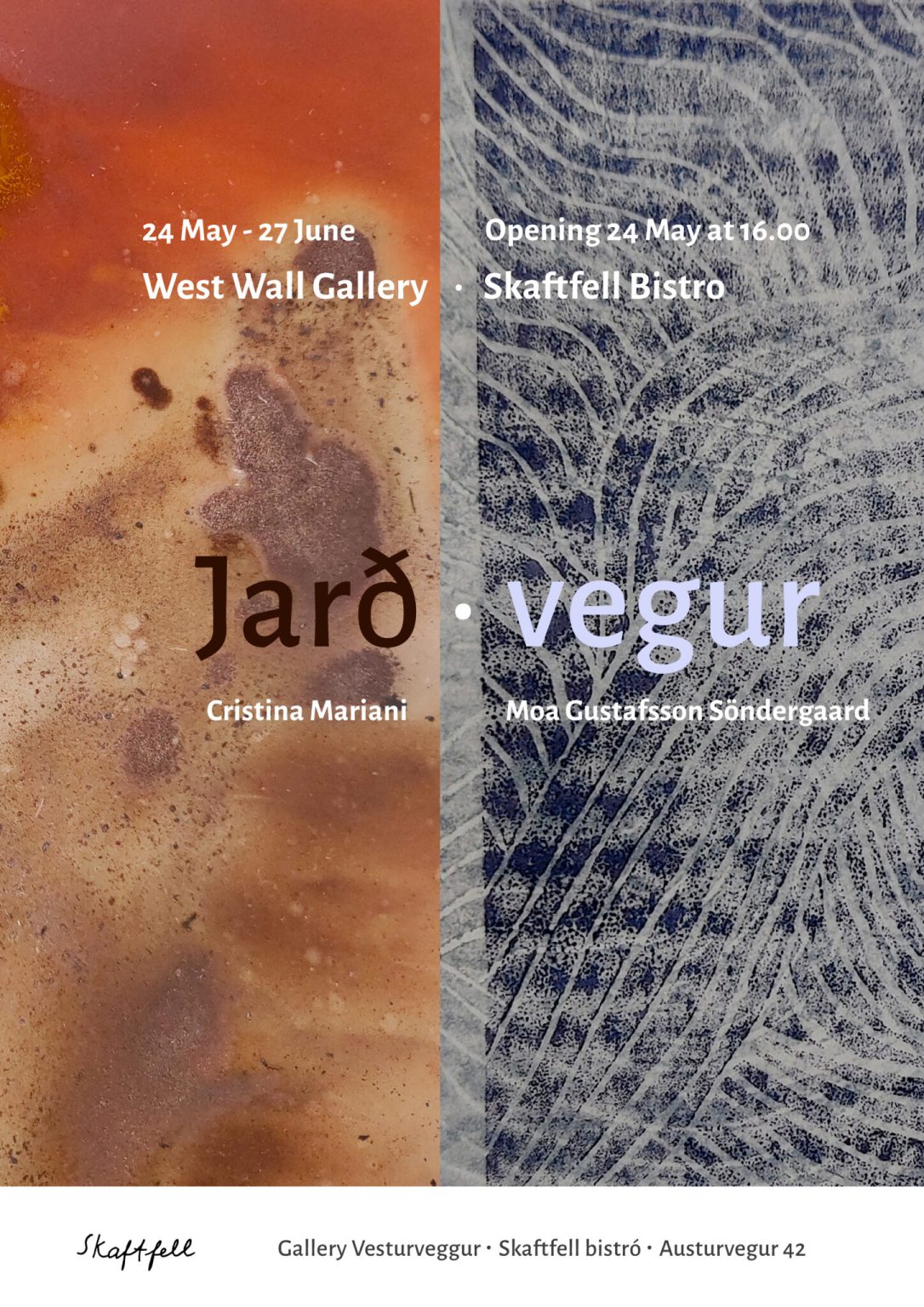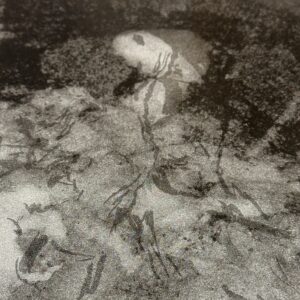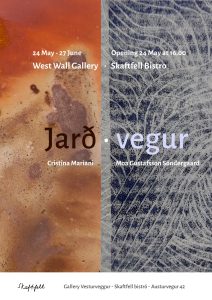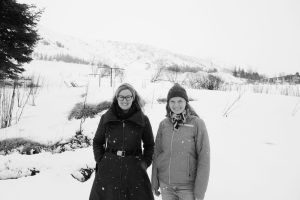Jarð•vegur — Cristina Mariani and Moa Gustafsson Söndergaard
May 24 – June 27, West Wall gallery, Skaftfell bistro
Open Tuesdays – Saturdays 15:00-23:00
May 24 – June 27, West Wall gallery, Skaftfell bistro
Open Tuesdays – Saturdays 15:00-23:00
Welcome to the opening of a new exhibition on the West Wall gallery of the Skaftfell bistro, Friday, May 24 at 16.00. The exhibition jarð•vegur brings together works by Skaftfell artists in residence Cristina Mariani and Moa Gustafsson Söndergaard who have for the past two months been working on their respective projects that both draw from the local environment in Seyðisfjörður. The works have been created at @prentverkseydisfjordur
Moa Gustafsson Söndergaard’s work ‘What flows through my hand that which flows through earth’ is a series of collages made during a one month residency at Skaftfell art center. The work is a conversation between material and movement that studies shifts and changes in our surroundings both man made but that also is part of a bigger rhythm of change within nature. The work which explores layers, topography and the printing process has been done in correlation with choreographed walks by the artist around the area. The idea of repetition has been important in the process so also the thought of nature as a transformative force and the relationship of us being transformed with it.
Cristina Mariani’s current research is focused on the perception of soil and rocks as immutable and inert entities, according to Man’s time what modifies slowly is considered immobile.
Casted by mixing biopolymers used in the food industry and local materials like soil, crushed rocks, plants and moss, soil bioplastics are ephemeral artworks that might disappear and return to nature under the action of water and heath.
The use of bioplastic, a recent material and a potential substitute for the actual polymeric plastic, is a celebration of the post-fossil culture. However fragile, bioplastic can last longer than most equipment and electronic objects that fill our daily life, shifting the concept of planned obsolescence towards sustainability. On these surfaces the different times of rocks, soil, bioplastic and geological data intersect, while becoming and fading away.
Casted by mixing biopolymers used in the food industry and local materials like soil, crushed rocks, plants and moss, soil bioplastics are ephemeral artworks that might disappear and return to nature under the action of water and heath.
The use of bioplastic, a recent material and a potential substitute for the actual polymeric plastic, is a celebration of the post-fossil culture. However fragile, bioplastic can last longer than most equipment and electronic objects that fill our daily life, shifting the concept of planned obsolescence towards sustainability. On these surfaces the different times of rocks, soil, bioplastic and geological data intersect, while becoming and fading away.




